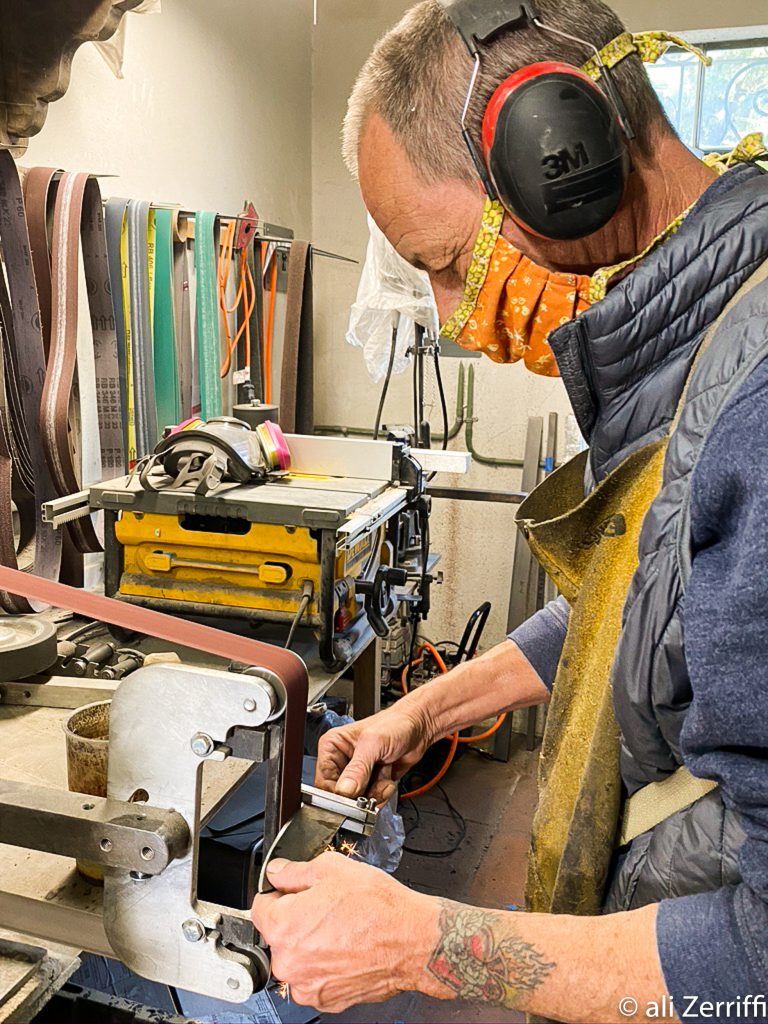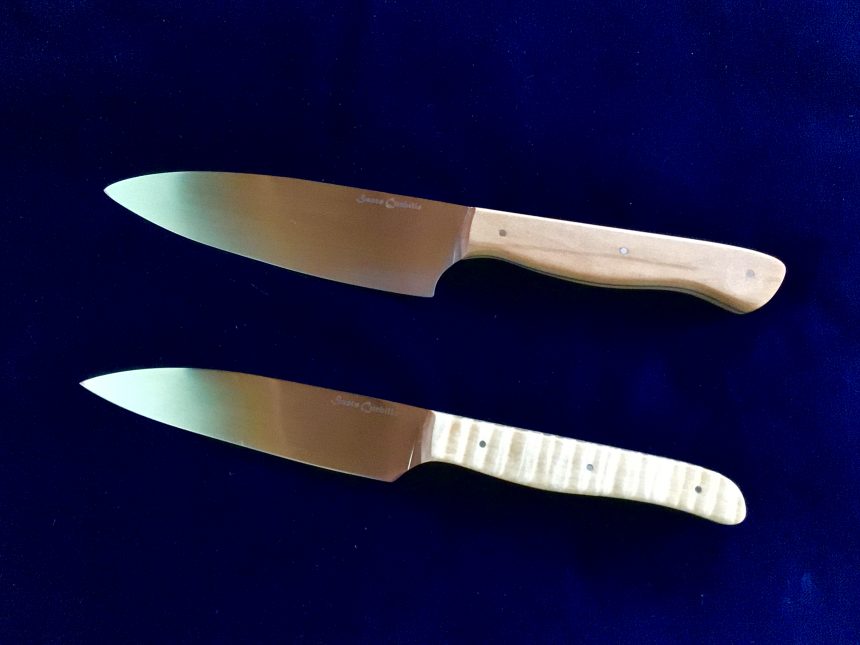By Gunnar Erickson, Photographs by Ali Zerriffi
Matthew Hoffman makes knives–—high quality, handmade, heirloom, artisanal tools of remarkable sharpness and great beauty. The blades are literally forged in fire and then shaped, hardened, and sharpened in his shop in San Miguel de Allende. He makes mainly kitchen knives and straight razors; they are available at his booth in the TOSMA market next to Mercardo Sano on Saturdays.
After working more than 30 years in journalism and book publishing and with retirement in sight, he recounts, “I knew that I wanted to do something—anything!—that didn’t involve a desk and a computer screen.” Making knives resonated because his dad was an enthusiastic chef and he grew up using and sharpening quality knives. He also was lured by having lots of tools, hot steel, and flying sparks.
He opened his first shop in 2010 and dabbled for years, learning the techniques of designing, shaping, heating, and grinding blades. By the time he and his wife moved to San Miguel, he had made (and largely discarded) a few thousand knives. By then he realized his “keepers” were far better than the knives widely commercially available and he decided it was time to make the transition from hobby to profession. That is when he started Santo Cuchillo: Heirloom Knives of Distinction.
Every Santo Cuchillo knife is a one-of-a-kind working tool. Hoffman believes a hand-crafted knife can and should look better and perform better than a mass-produced blade. Crafting a knife takes about a day of work. Once he has the initial design, he shapes the blade on a powerful bench grinder, then refines the shape by grinding away steel, a little bit at a time. There are dozens of steps along the way: drilling holes for handles, thinning the blade, heat-treating to nearly 2000 degrees in some cases, and choosing and fitting a handle material.
For handles Hoffman uses exotic hardwoods. He even sourced local mesquite, which makes a lovely and durable handle. He has found that most people prefer shiny knives so he primarily uses high-quality stainless steel. Hoffman notes that in the last few years, many of the big knife manufacturers have begun reintroducing “old school” carbon steel. It is prone to rust but he loves it because it takes an exceedingly fine edge and develops a lovely patina. It makes a knife look old and well-loved.
In the U.S., hand-crafted knives can be “very” expensive—anywhere from a few hundred to a few thousand dollars. Hoffman tries to price his closer to what you’d pay for one of the big-name commercial knives—less, in many cases. In general, the Santo Cuchillo knives range from about 1,000 pesos for a simple steak knife, to about 2,500 pesos for a large chef’s knife. Unlike factory objects, a hand-crafted knife has “soul.” When you buy your first hand-made blade, you’ll notice the fit and finish. You’ll enjoy how well it cuts. But what you’ll really appreciate is knowing that you’re using a tool that was made by hand. There’s a bit of the maker in there!


